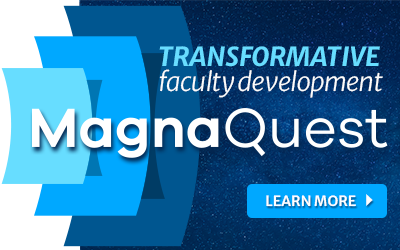In an era of rapid demographic change in the U.S. population coupled with declining demand for higher education, many colleges and universities are grappling with the urgent need to attract and retain diverse student, faculty, and staff populations and provide an inclusive learning, living, and working environment on campus. Such an environment is necessary to build intentional and integrated programs that enable students to realize the educational benefits of diversity and prepare graduates for careers in a global, interconnected society. In the past, the tendency has been to implement sporadic or fragmented approaches to diversity and inclusion that have not yielded the anticipated outcomes. Even the creation of diversity strategic plans is not a guarantee of demonstrable change.
Without a comprehensive assessment of diversity and inclusion programs, campuses may not be able to identify areas of strength and weaknesses across the decentralized landscape of divisions, schools, and departments. Yet, at the same time, academic leaders are faced with diminishing resources, declining enrollments, severe budgetary cutbacks, limited ability to further raise tuition, and challenges to maintaining endowments. Most institutions do not have the budgetary largesse to invest in costly audit processes involving outside consultants, such as the $1.1 million diversity audit undertaken at the University of Missouri (UM) system. While UM was embroiled in student protests regarding race relations in 2015 at its flagship campus in Columbia, it was also dealing with falling enrollment as well as losses in tuition and state funding that had led to layoffs and staff reductions. Not surprisingly, the audit’s cost was a source of concern.
A viable, cost-effective alternative to contracting with outside consultants for diversity assessment is to undertake a campus-based diversity audit. The campus-based audit circumvents the need for external design and ensures alignment with campus mission and goals. Although this approach involves a considerable investment of time, it better engages campus stakeholders in a process of self-reflection and action research. The diversity audit can serve as a dynamic vehicle to strengthen the collaboration and participation of campus constituencies and, at the same time, provides the ability to address relevant accreditation criteria.
To address this need, our forthcoming book, Conducting an Institutional Diversity Audit in Higher Education: A Practitioner’s Guide to Systematic Diversity Transformation (Stylus, 2019), provides a framework of nine critical dimensions for building strategic diversity capacity. Following an analysis of leading instruments and models for diversity assessment, the book then provides a progressive, modular approach to diversity transformation. The research-based approach is designed to allow campuses to audit, analyze and evaluate each dimension, identify gaps, prioritize needed areas of focus, align progress with accreditation criteria, and create a long-term strategy for diversity change. The audit process can be implemented flexibly in terms of timing and sequence of implementation. Each chapter contains a set of audit questions, self-assessment worksheets, best practices, resources for further study, and links to accreditation criteria.
The dimensions of the audit have direct application to academic leadership and will help leaders identify successful practices as well as areas for further improvement. The audit process itself is designed to generate reflection, discussions, and feedback and will provide opportunities for identification of specific objectives, timelines, and milestones. Among the audit dimensions are:
- The academic, mission-centered case for diversity and inclusion
- Diversity organizational learning and education
- Evaluating the climate, culture, and readiness for diversity transformation
- Fostering an inclusive talent proposition through search, recruitment, and hiring processes
- Enhancing retention, total rewards programs, and talent sustainability
Consider, for example, the dimension of talent retention as a key driver of academic success and institutional viability. Surprisingly, the research literature pertaining to higher education talent practices has been limited for the most part to analysis of discrete functions, such as faculty compensation.
The climate and culture of the institution and department as well as how diversity and inclusion are valued and supported through equitable employment practices are leading factors in the retention of diverse employees. As research indicates, the macro-climate of an institution combined with micro-level departmental practices of marginalization and tokenism can lead to turnover of faculty of color. In this regard, a study of 107 non-tenure track faculty members in 25 departments in three institutions found that destructive cultures characterized by non-supportive leadership had a negative effect on faculty performance. By contrast, cultures that support student learning and opportunities for faculty to gain professional knowledge actually strengthened commitment and the willingness to go beyond what is expected (Kezar, 2013).
In addressing factors that impact retention, the five components of the Employee Value Proposition (EVP) merit close attention: direct compensation, work content, affiliation, benefits, and career development (Ledford, 2002). Each component has exit drivers that can cause talented faculty and staff to leave the institution. An adverse working climate, for example, will undermine the affiliation with the college or university and can lead to turnover. Internal inequity in compensation, such as when new hire salaries exceed existing faculty or staff salaries, can cause dissatisfaction. And without a comprehensive compensation analysis, awarding of merit-based pay increases can have differential impact on the salaries of women and minorities. As a result, academic leaders will benefit from evaluation of each of the factors in the EVP in partnership with human resources and the institution’s chief diversity officer.
Despite the considerable financial challenges facing higher education, the systematic and cost-effective process of a campus-based diversity audit will enable academic leaders to partner with faculty and staff stakeholders in undertaking a concrete assessment of diversity progress in order to prioritize future goals. As a forward-looking undertaking, it will build on existing strengths and proactively align with accreditation requirements. The audit process will assist academic leaders in strengthening an inclusive talent strategy through programs and practices that leverage the strengths of diversity in support of student learning outcomes.
References
Kezar, A. (2013). Departmental cultures and non-tenure-track faculty: Willingness, capacity, and opportunity to perform at four-year institutions. Journal of Higher Education, 84(2), 153-188.
Ledford, G. (2003). Ledford, G. E., Jr. (2003). The rewards of work framework: Attracting, retaining and motivating higher education employees. CUPA-HR Journal, 54(2), 22–26.
Edna B. Chun, DM and Alvin Evans are award-winning authors, each with more than two decades of experience in higher education. Edna Chun is chief learning officer and Alvin Evans is higher education practice leader for HigherEd Talent, a national HR and diversity consulting firm.



